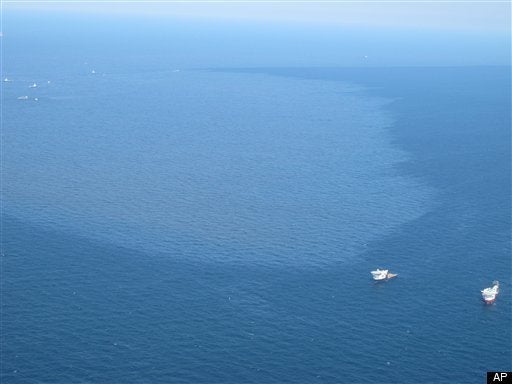
Three weeks after BP's oil well blew up and started poisoning the Gulf of Mexico, the private research vessel Jack Fitz, carrying a team of well-equipped scientists under contract to NOAA, steamed out to the spill site to measure the extent of the damage being wrought in the waters below.
From the get-go, the National Oceanic and Atmospheric Administration has been meticulously tracking the volume and trajectory of the oil that made it to the water's surface. But by the time the Jack Fitz headed out, many marine scientists were agitating for the government to start quantifying and tracking the vast amount of oil they knew was lurking below the surface.
Due to the extraordinary depth of the leak and the unprecedented use of dispersants to break the oil up into smaller droplets, much of the oil appears to be forming huge underwater plumes that pose an imminent threat to sea life and a possibly decades-long threat to the nation's coastlines.
But in the days after the Jack Fitz returned to port, neither its measurements -- nor its very existence -- were made public.
Members of the media have been increasingly clamoring for more information about the extent of the subsea oil and for NOAA to forcefully rebut BP CEO Tony Hayward's outrageous and self-serving claim that "the oil is on the surface." But even after lab results came back from the Jack Fitz mission, NOAA's director wouldn't contradict Hayward, acknowledging only that unspecified "anomalies" had been found underwater.
As it turns out, however, the Jack Fitz's mission was never intended to edify the public -- or even to help the emergency response effort -- but rather to start the long and laborious task of building a legal case that will force BP to make right everything it has made wrong.
One focus, in fact, was on determining the physical parameters of the oil -- a key data point for the mathematical modeling that will eventually help NOAA determine the scope of the toxic effects of the spill. Video from a remotely operated underwater vehicle from the Jack Fitz showed the main plume emerging from the leak site.
NOAA officials , responding to a Huffington Post article questioning the non-release of the Jack Fitz data, explained that the agency's two missions when responding to ecological disasters just don't work at the same speed.
At the same time that parts of NOAA are monitoring and tracking the spilled oil as part of the government's emergency response efforts, other parts are engaged in assessing the damage the spill has caused in order to make sure the responsible party -- in this case, BP -- pays what is required to fix it.
The emergency response operates in real time and is, at least in theory, transparent. Damage assessment is typically a slower and less transparent process, the focus of which is to build a legal case. Indeed, in some cases the results are not necessarily made public until trial, if it comes to that.
But that may change. Commerce Department spokeswoman Shannon Gilson told the Huffington Post: "Given the unprecedented scope of the BP oil spill, the federal trustees want to make the validated results of the damage assessment data available to the public as soon as possible. However, we can't make the decision unilaterally since the states are co-trustees of the Natural Resource Damage Assessment process. We are currently working with our state partners."
Independent scientists have criticized NOAA for being slow to respond to the threat posed by sub-surface oil that is causing untold damage to critical ecosystems offshore and is heading in who knows what direction.
And while no one disagrees that there is a plume of oil directly above the leak, what remains unclear is precisely what proportion of the oil is not making it to the surface at all, but drifting laterally.
On this, the eighth week of the disaster, more and more solid evidence of giant plumes is emerging from a variety of sources. The Associated Press is reporting that tests "have confirmed underwater plumes dozens of miles from the broken wellhead off Louisiana that's been gushing oil since late April, NOAA Administrator Jane Lubchenco said in Washington. A University of South Florida research vessel confirmed oil as far as 3,300 feet below the surface 42 miles northeast of the site and 142 miles southeast, Lubchenco said at a briefing."
Greenwire reports: "Researchers aboard the F.G. Walton Smith vessel briefed reporters on a two-week cruise in which they traced an underwater oil plume 15 miles wide, 3 miles long and about 600 feet thick. The plume's core is 1,100 to 1,300 meters below the surface, they said. 'It's an infusion of oil and gas unlike anything else that has ever been seen anywhere, certainly in human history,' said Samantha Joye of the University of Georgia, the expedition leader."
And the Washington Post reported from aboard the Thomas Jefferson that "this survey vessel of the National Oceanic and Atmospheric Administration has found erratic, moving clouds of hydrocarbons -- which may be oil and gas -- at depths of more than 3,600 feet less than eight nautical miles from the site of the BP oil spill, officials said Tuesday."
